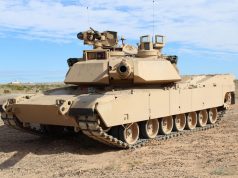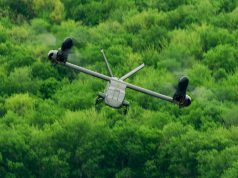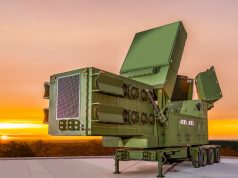Raytheon Technologies announced the launch of RAIVEN, an electro-optical sensing technology that will enhance pilots’ threat identification capabilities with the help of artificial intelligence.
RAIVEN’s ability to perform real-time optical and spectral identification of objects simultaneously is made possible by its use of artificial intelligence, hyperspectral imaging, and light detection and ranging, or LiDAR.
These technologies, combined with RAIVEN’s ‘intelligent-sensing’ capability, provide pilots with enhanced vision, enabling them to see farther and clearer than before. This increased visual range not only improves platform survivability but also gives the warfighter an advantage over peer threats, Raytheon says.

Photo: Raytheon
RAIVEN’s integration with AI allows it to compile vast amounts of data into a comprehensive image of the battlespace and its potential threats. The AI’s automated threat detection and identification capabilities provide operators with a level of automation, reducing their workload while enabling them to make critical decisions.
“The future battlespace will consist of a myriad of threats from all directions evolving at an unprecedented pace,” said Torrey Cady, vice president of surveillance and targeting systems at Raytheon intelligence & space. “RAIVEN improves platform survivability and keeps the warfighter safe by providing accurate, persistent target observation coupled with accelerated information sharing. This combination enables a decision-making process that simultaneously reduces pilot workload while accelerating engagement decisions to prosecute targets much faster than adversaries.”
Despite its enhanced capabilities, RAIVEN maintains the same size, weight, and power specifications as its predecessors. The first version of the system, RT-1000, is expected to support a variety of missions, including the US Army’s Future Vertical Lift modernization initiative.
Raytheon says the first flight test of the system is scheduled for 2024, with work on the program taking place in McKinney, Texas.



























